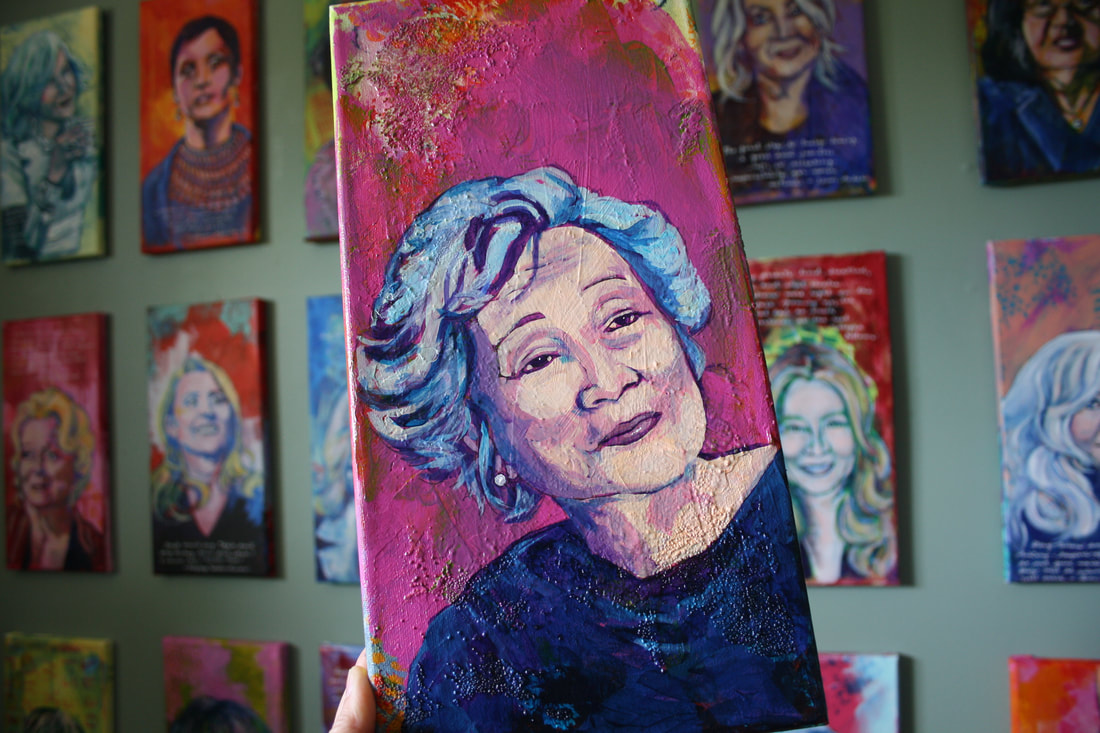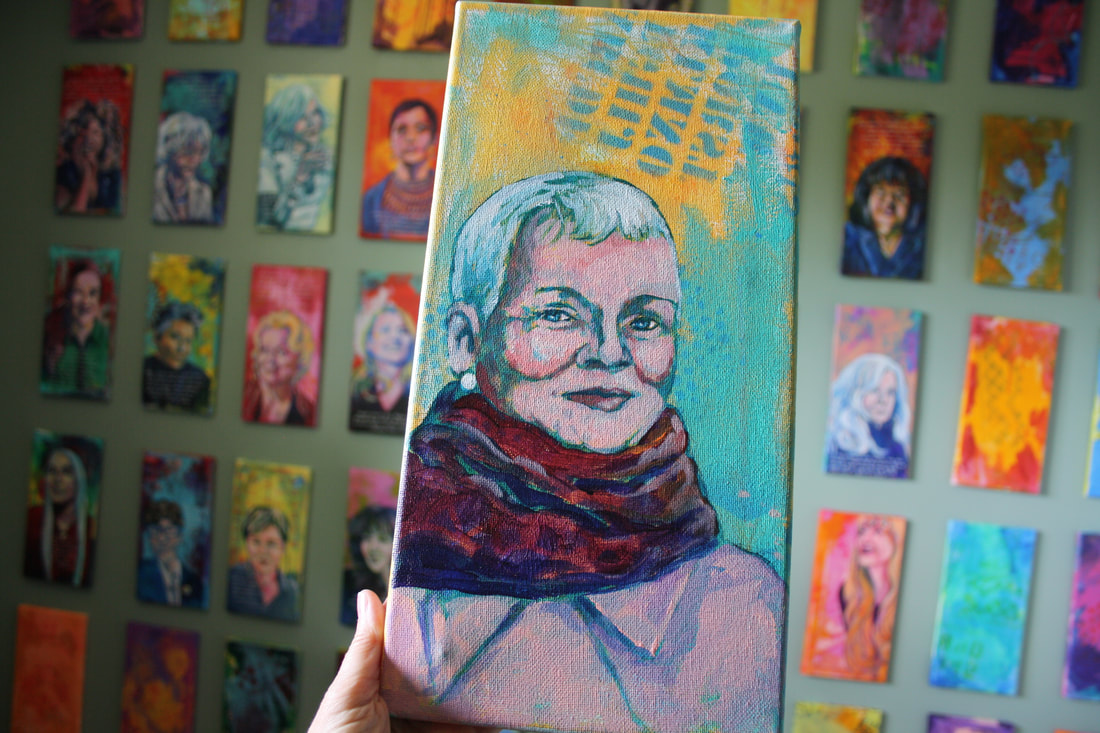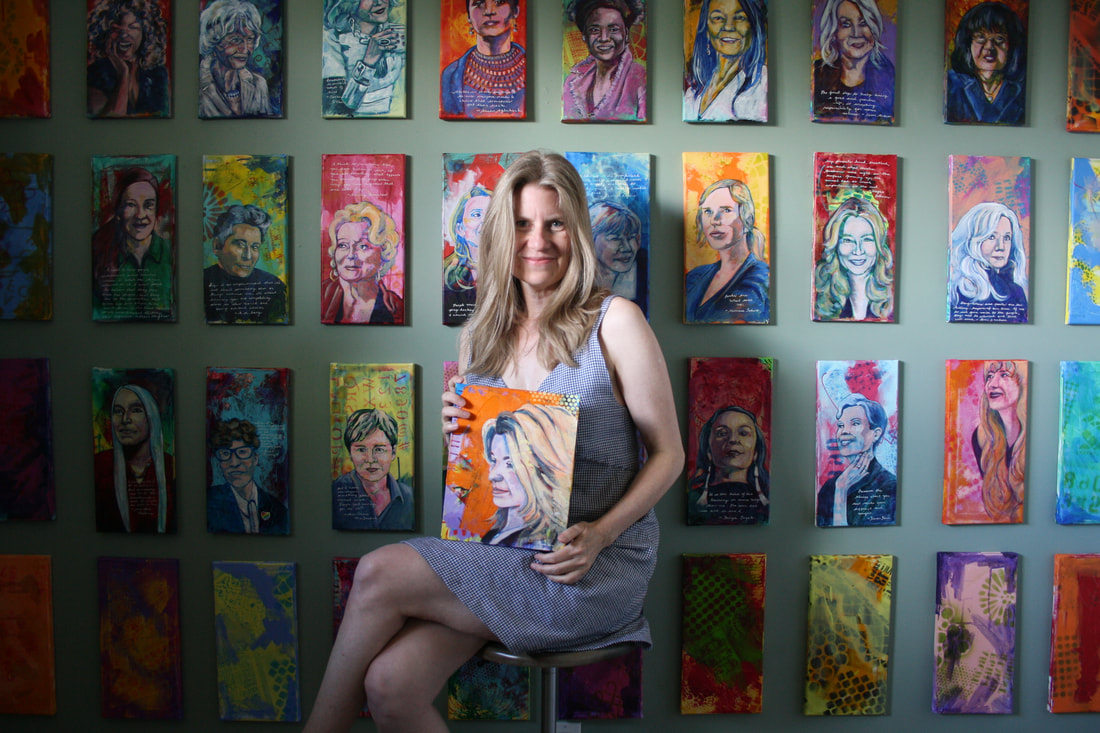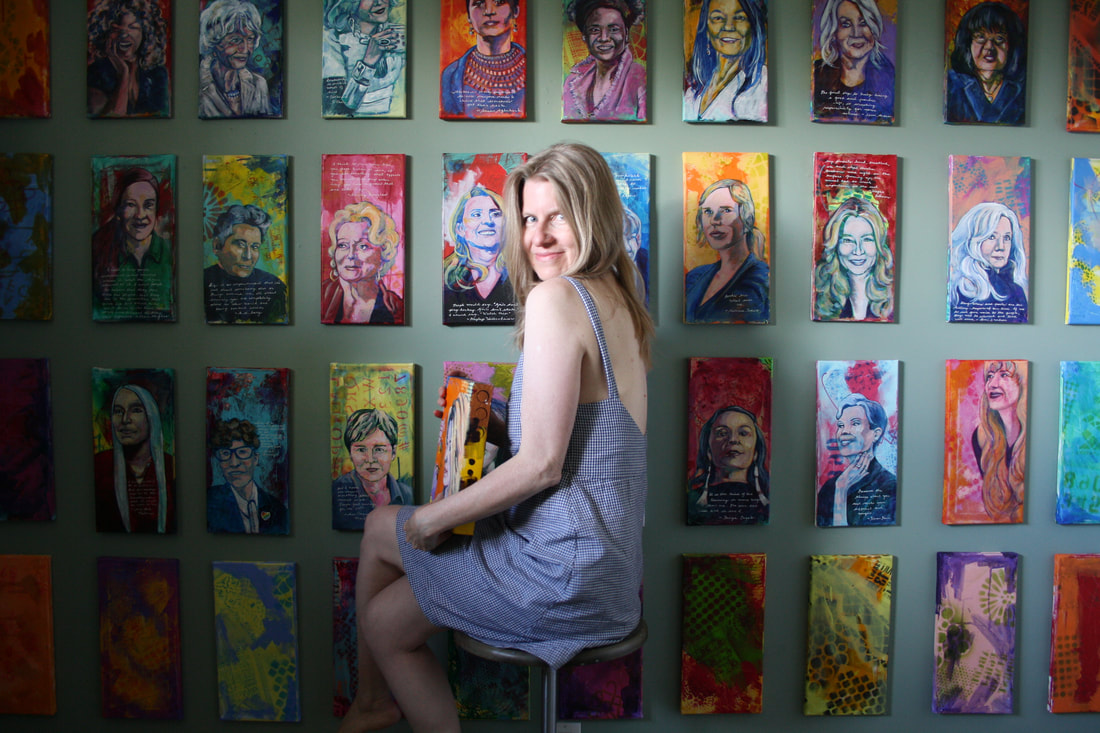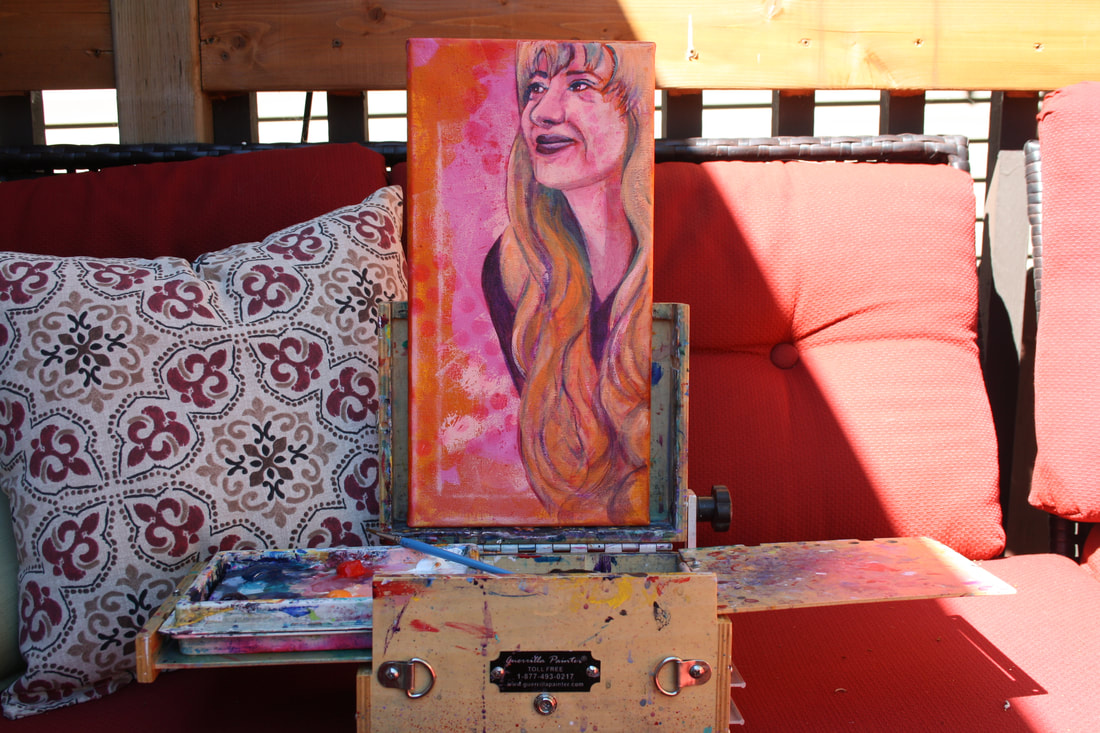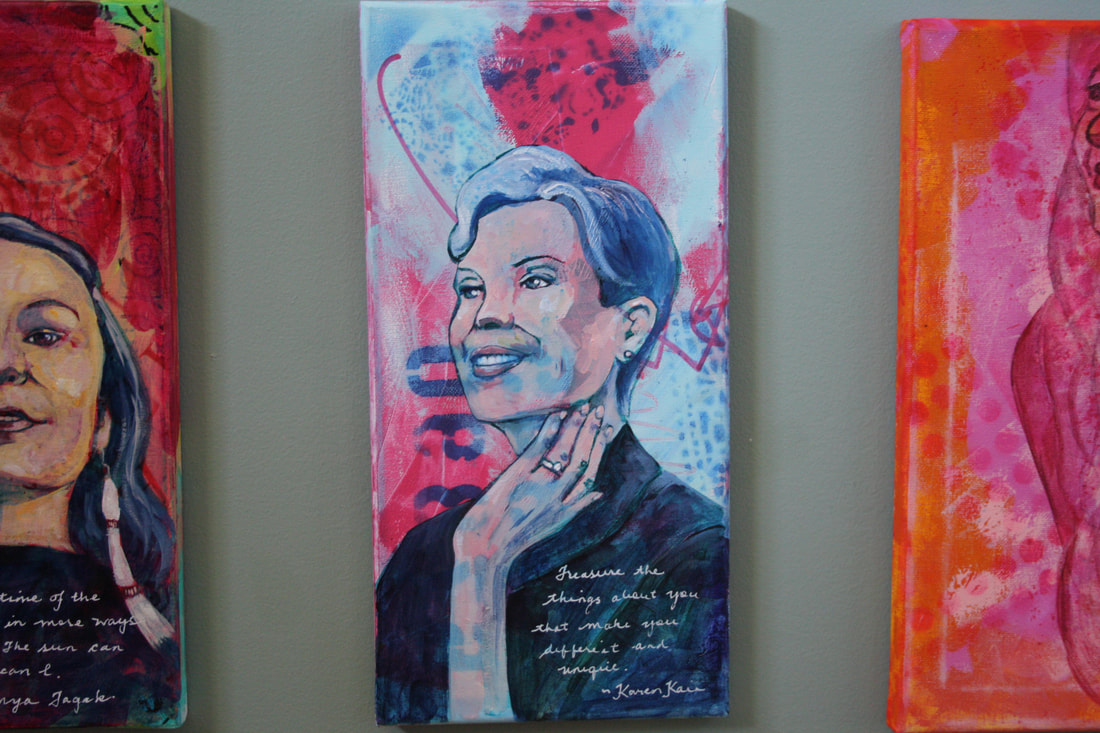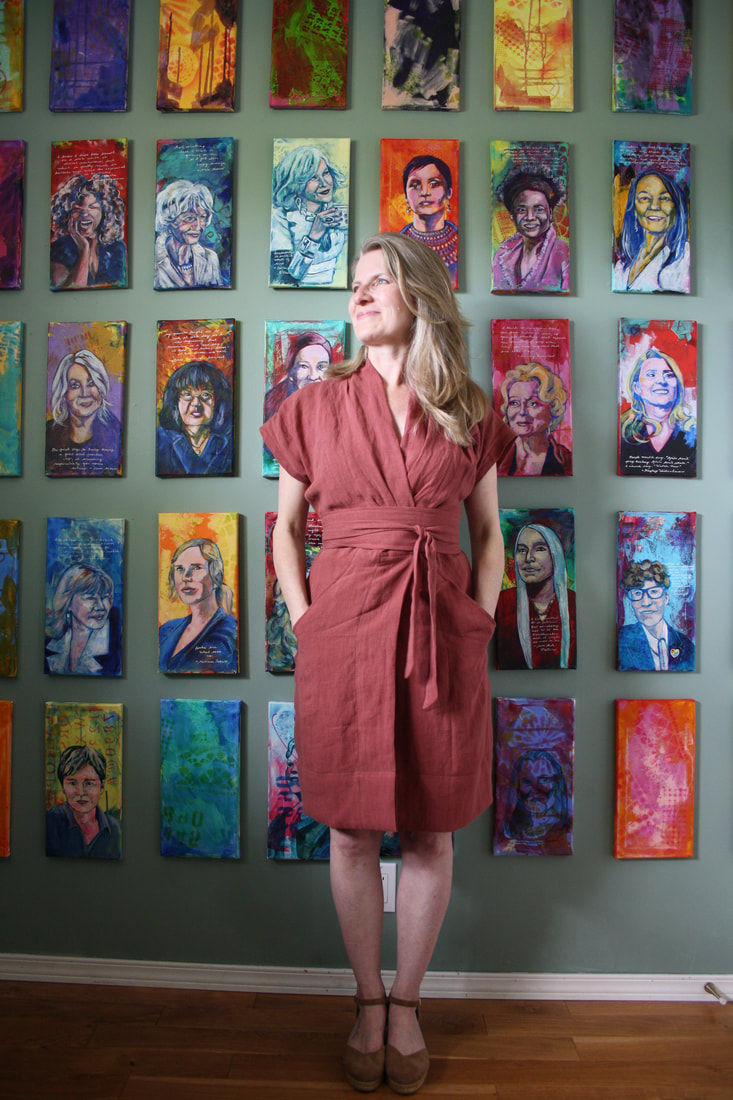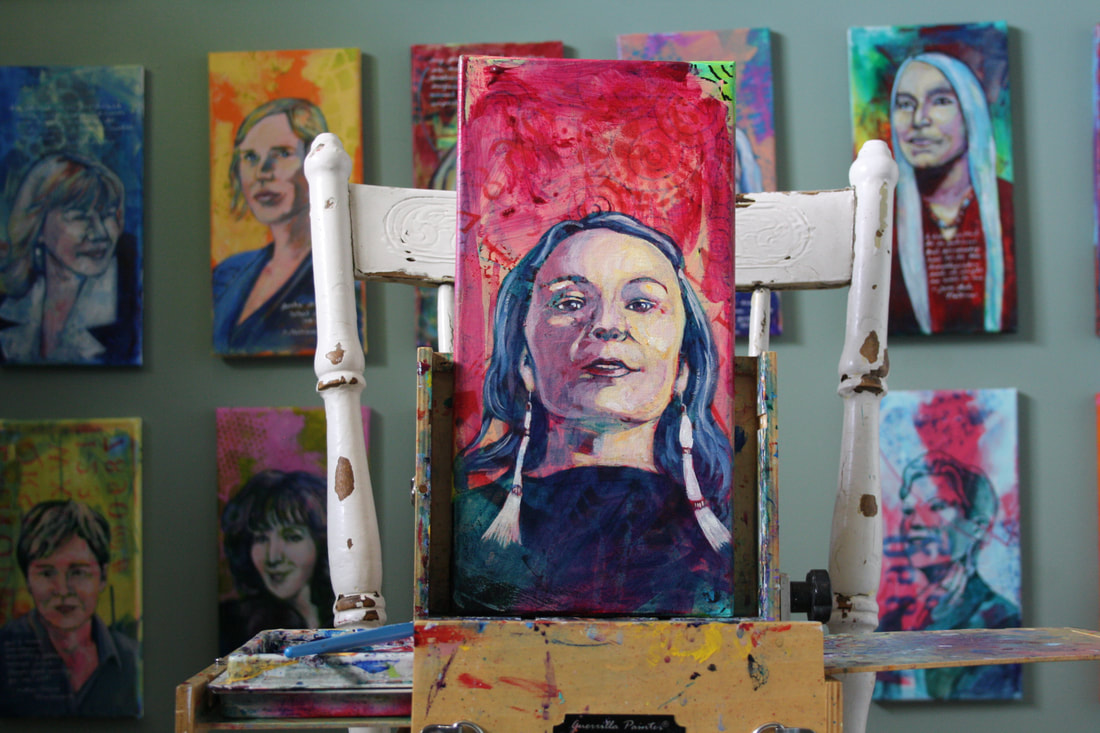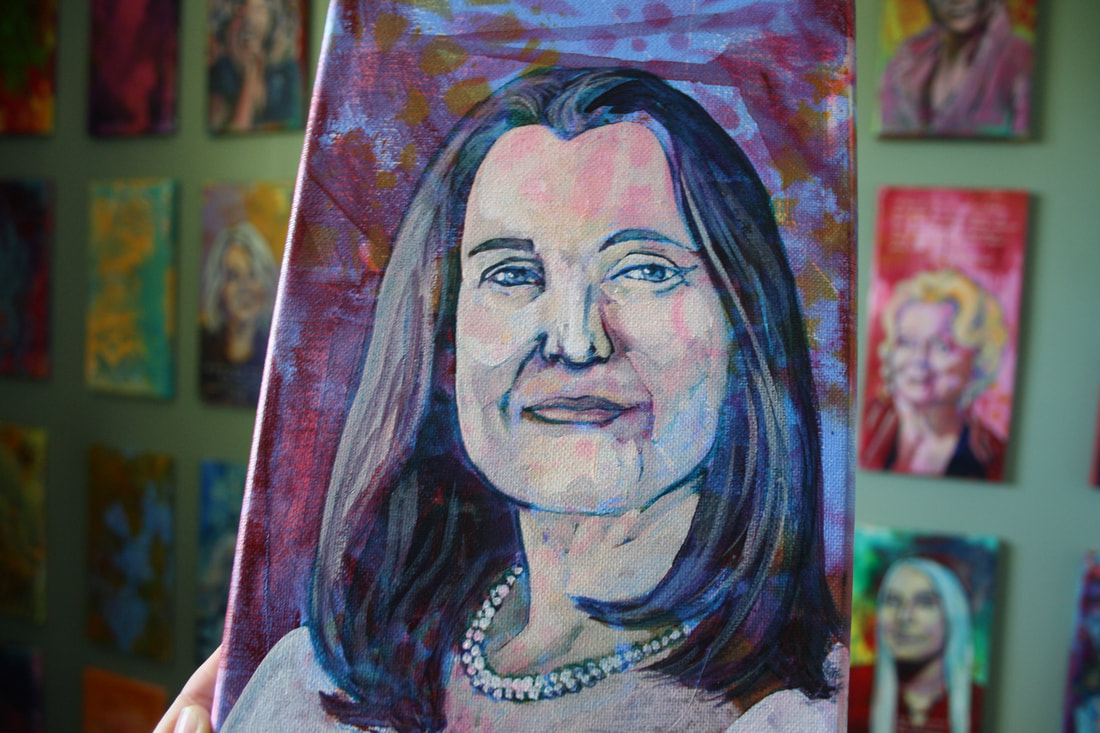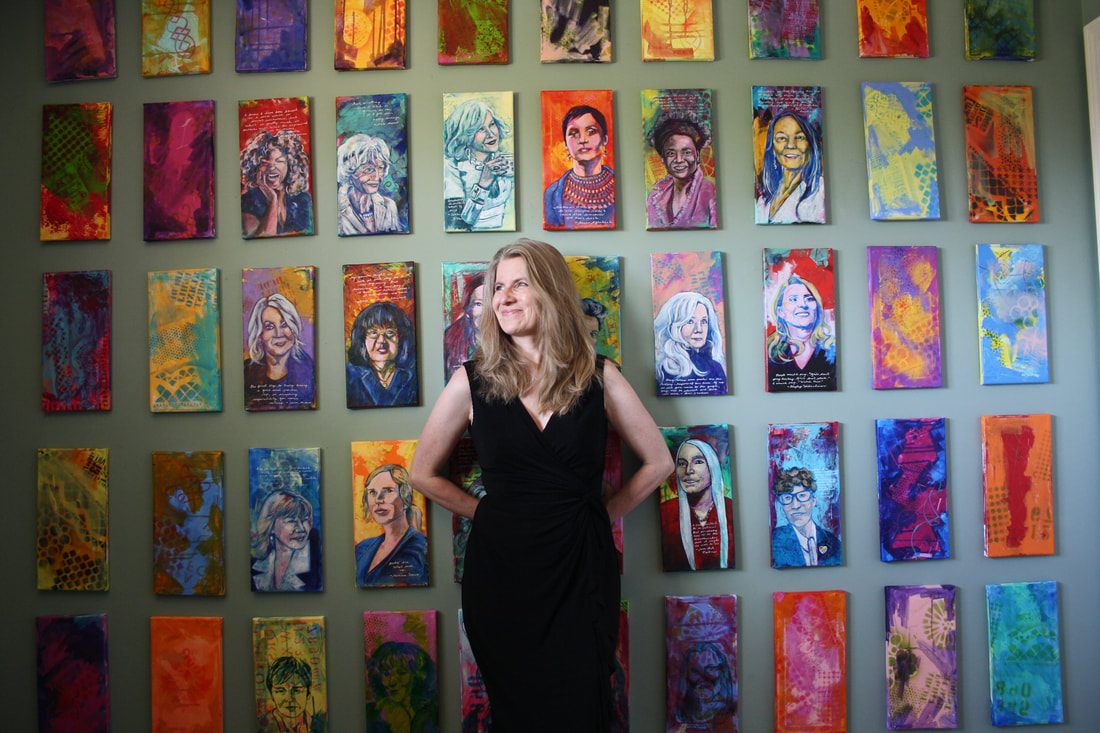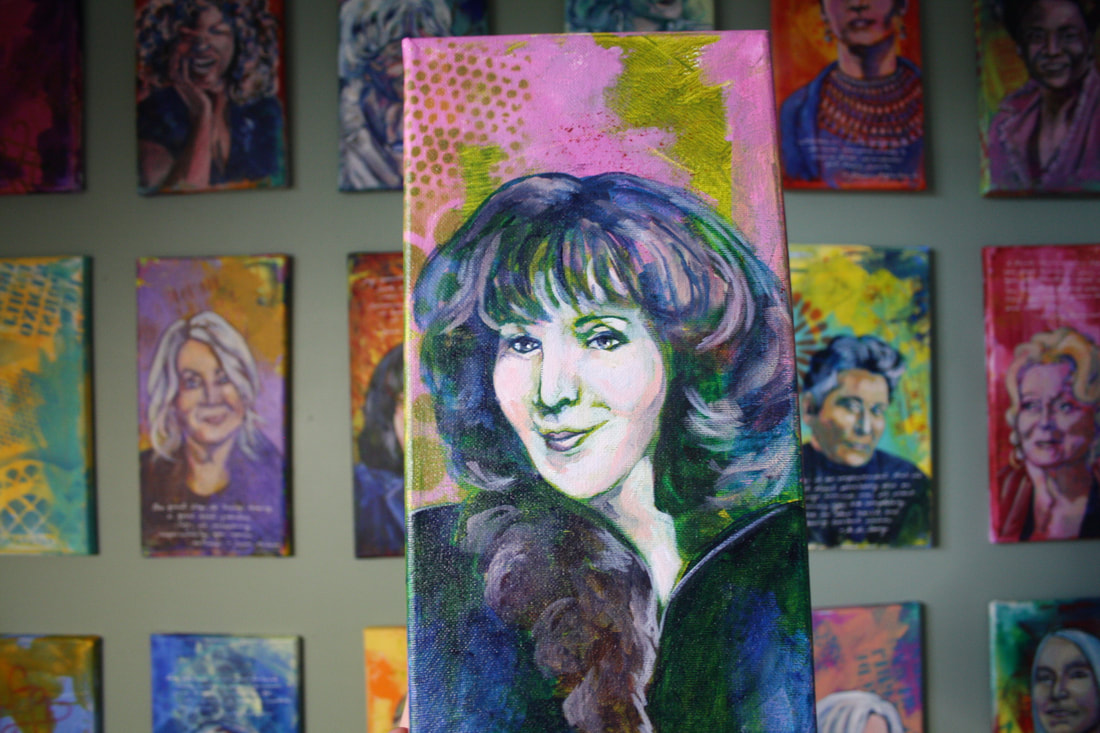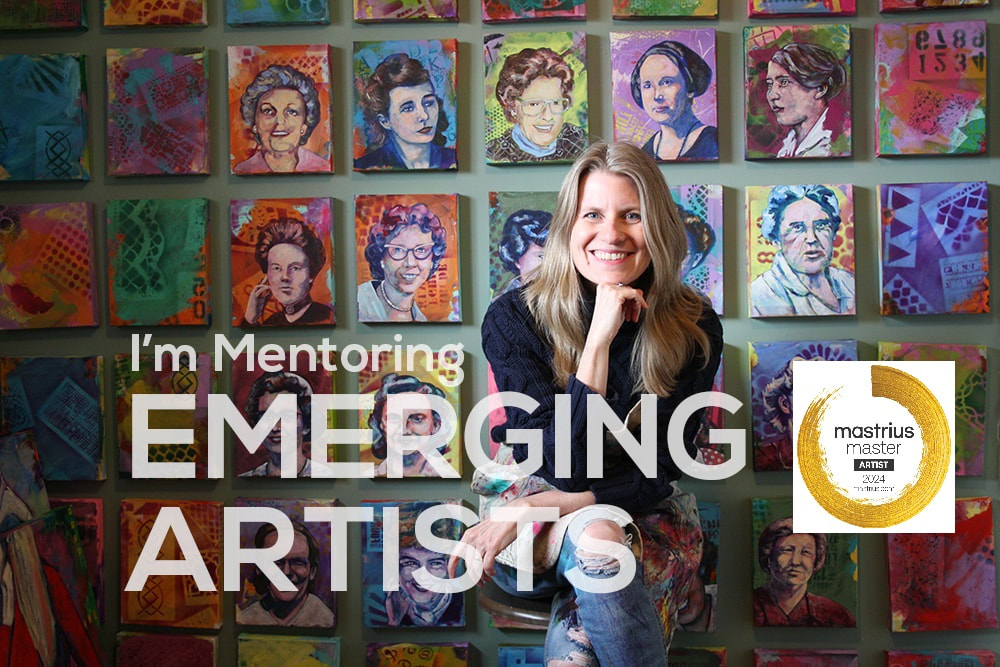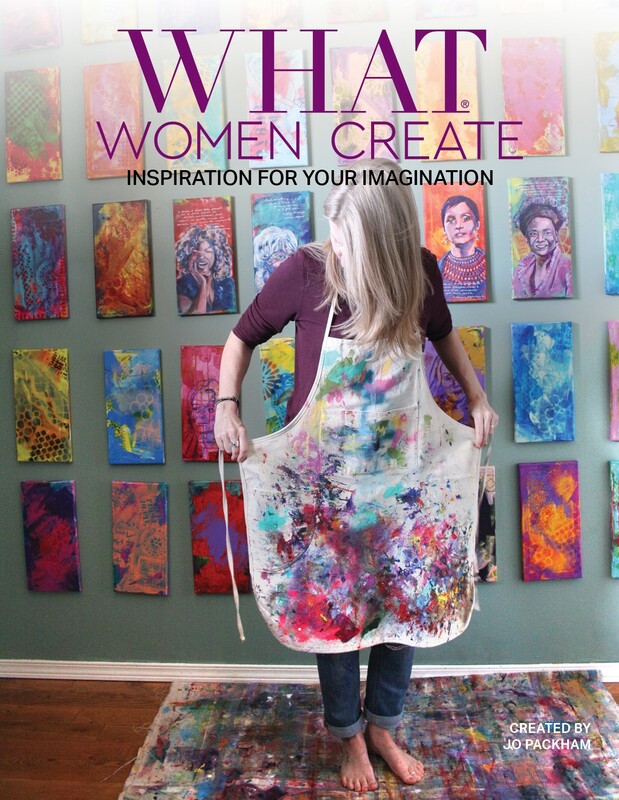Each of us is carving a stone, erecting a column, or cutting a piece of stained glass in the construction of something much bigger than ourselves. Adrienne Clarkson was born in Hong Kong in 1939, the daughter of Ethel and William Poy, a prominent businessman who lost his property after the Japanese invasion of Hong Kong in 1941. Clarkson arrived in Canada with her parents and older brother, Neville, as refugees in 1942. At the time, the Chinese Immigration Act excluded the arrival of virtually all Chinese immigrants. However, William Poy’s work at the Canadian Trade Commission in Hong Kong is believed to have helped him bring his family to Canada under “special circumstances” granted by the government.
“We arrived with one suitcase apiece and nothing else,” Clarkson said in a 2002 speech to the Joint Refugee Committee in Red Deer, Alberta. “I was very fortunate that my family never thought of themselves as having lost anything of real value. We lost only material things… We didn’t lose what we really believed in as human beings.” Clarkson’s family settled in Ottawa, Ontario, where she grew up and attended public schools. She studied at the University of Toronto, where she received an Honours BA (1960) and MA (1962) in English Literature. From 1962 to 1964, she studied at La Sorbonne in Paris, France, which she credits for making her “truly bilingual.” Early and Mid CareerIn 1965, Clarkson began an award-winning, 18-year career as TV host-interviewer, writer and producer for the CBC. She started as a book reviewer for the show Take Thirty, where she was quickly promoted to co-host. The promotion made her the first racialized Canadian to headline a national program. She remained there for 10 years, during which time she also wrote for many of Canada’s national print publications, including Chatelaine and Maclean’s magazines. Clarkson also published two novels with McClelland & Stewart: A Lover More Condoling (1968) and Hunger Trace (1970), as well as a collection of interviews on the subject of marriage and divorce, True to You In My Fashion: A Woman Talks to Men About Marriage (1971), with New Press. In 1974–75, she briefly hosted her own current affairs show, Adrienne at Large, which ran less than four months. The following year, she left Take Thirty and helped launch the CBC’s new program the fifth estate, a newsmagazine show modelled on CBS’s famed 60 Minutes and the BBC’s Panorama. Clarkson worked as a co-host and reporter for the show. Her reporting highlights included an investigation of the financing of the 1976 Olympic Summer Games in Montreal, an interview with the Shah of Iran, and a look into the McCain Foods’ business practices. According to a profile of Clarkson in Maclean’s, her story on McCain’s irritated senator Josie Quart, who accused Clarkson of degrading “Canadians who had been successful” and for not being a naturalized Canadian citizen for most of her life — though Clarkson’s family had gained citizenship in 1949. Quart later apologized. Clarkson was noted for her style of interviewing, which elicited strong, illuminating responses from the people she interviewed. According to Ron Haggart, a producer of the fifth estate, “[Clarkson] had the ability to put people at ease, such that they probably said more than they thought they were going to say…. That included her ability to know when to keep quiet.” Clarkson left the fifth estate in 1982 and was appointed by Premier Bill Davis as Ontario’s first agent-general in Paris. In this role, Clarkson promoted Ontario’s business and cultural interests in France, Italy and Spainfor five years. On her return to Canada in 1987, she became president of McClelland & Stewart, where she remained until 1989. In 1988, Clarkson had returned to broadcasting as executive producer and host of CBC’s national arts showcase Adrienne Clarkson’s Summer Festival. In September 1999, Queen Elizabeth II appointed Clarkson governor general on the advice of Prime Minister Jean Chrétien. She took office on 7 October 1999, as the 26th governor general of Canada.In assuming the role, Clarkson became the first person without a military or political background, the first racialized Canadian and the first person of Asian heritage to be appointed to the vice-regal position. She was the second woman appointed to the role, after Jeanne Sauvé (1984–90). Clarkson faced intense scrutiny from MPs and the Canadian public for what was deemed lavish spending during her tenure. A 2003 state visit to Russia, Finland and Iceland that cost $5-million provoked a great deal of anger. As a result, Clarkson’s officials were questioned by a House of Commons committee inquiry, resulting in a reduction in her budget. Others claimed that the 19-day circumpolar “northern identity” tour, which included 59 other prominent Canadians, was a resounding success, enabling Canada to foster a successful relationship with the northern European countries. Clarkson’s dedication to the vice-regal role was also questioned during her notable absence from important national events, such as the funeral service of Alberta’s former lieutenant-governor, Lois Hole. Clarkson’s tenure had many successes. She continued to be an ardent patron of the arts and travelled overseas to support troops in Kosovo and Afghanistan. Her speech at the burial ceremony for Canada’s Unknown Soldier, on 28 May 2000, was a stirring tribute that resonated among veterans. Clarkson maintained that she would attempt to forge stronger ties between Canada and northern Indigenous peoples during her time as governor general. She created the Governor General’s Northern Medal, awarded annually to a northern citizen whose work has helped affirm the Canadian North as part of the national identity. She also travelled throughout Canada, perhaps more than any other governor general, visiting its people and bringing a sense of modernity to the vice-regal position. Though Clarkson’s term was to have ended in 2004, Prime Minister Paul Martin asked that she remain in office an additional year, believing that continuity in the vice-regal role would offer Canadians a sense of stability in the face of an insecure minority government. ~ The Canadian Encyclopedia Words are our life. We are human because we use language. The writer Carol Shields, who has died of cancer at the age of 68, did not start life as a Canadian, despite becoming one of that country's most distinguished literary figures; in fact, she was born and brought up in the same Chicago suburb as Ernest Hemingway.
It is difficult to imagine two writers with more different ways of looking at the world, and the influence of geography on style was perhaps what Shields was alluding to when she said in an interview that Canada had been a "very good country for writers. We don't have a long literary tradition. People aren't intimidated by the ghosts of Hemingway and Faulkner. We're not big on heroes, either. The concept of heroes is alien, and I think that's a very telling piece of our national ethos - no one deserves to be better than anyone else." That final phrase perhaps defines Shields's fiction - her 10 novels, including The Stone Diaries and Larry's Party, three collections each of short stories and poems, and several plays, biography and critical studies - better than any other. She was frequently praised for her masterful depiction of ordinary lives, and for her ability to present complex and subtle subject material in a deceptively light, comic manner. She was never to recount epic tales peopled by grand heroes and heroines. Rather, her achievement was to explore everyday triumphs and tragedies in a way that seemed anything but pedestrian, bringing to the task a wit and quiet acerbity that continually cast light on the business of making lives into stories, both in and outside of books. Shields was born and raised in Oak Park, Illinois, the daughter of a sweet factory manager and a schoolteacher, and later attended Hanover College, Indiana. During her time there she took part in an exchange programme with Exeter University, and met her future husband Donald, a civil engineer with whom she was to emigrate to Canada in 1957. Shields lectured at the University of Ottawa from 1977 to 1988 and, after moving around the country, she and Donald finally settled in Winnipeg, Manitoba, where she was professor of English at the University of Manitoba from 1990, and then chancellor of the University of Winnipeg from 1996. The couple moved to Victoria, British Columbia, in 2000, where Shields kept up a critical interest in world affairs, books and topics as diverse as trilobites, bees, apples, feminism, geology, evolution and consciousness. During the early years of her marriage, Shields was largely preoccupied with bringing up five children, although she found time to complete an MA in English literature at the University of Ottawa and to publish her thesis on the 19th-century backwoods pioneer and writer Susanna Moodie. While her children were still small, she began to write poetry, and brought out two collections, Others and Intersect, with a local press. Her interest in Moodie was to provide her with the inspiration for her first novel, Small Ceremonies, which appeared in 1976, possibly reflecting some of her concerns about her own vocation; its protagonist was a biographer attempting to write fiction for the first time. By this time, Shields was 40 and, by today's youth-oriented standards, a late starter. But the book's positive reception - it won the Canadian Authors Association award for fiction - and her growing self-confidence convinced her to continue, and two more novels followed over the next six years. In The Box Garden (1977) and Happenstance (1980), she began to develop her exceptional talent for uncovering the extraordinary in the mundane, and the dramatic in the domestic. It was, however, with two subsequent novels that Shields's reputation really began to be made, not least because she was also discovered by a British audience. In part, it was luck; Christopher Potter, an editor with the fledgling publishing house Fourth Estate, was scouring small Canadian and north American presses, convinced that they were sources of under-appreciated literary greatness. He happened upon Shield's fifth novel, Swann, and promptly snapped it up - together with its author's backlist. The novel was published in Britain in 1990 as Mary Swann, and its story of four people vying to reconstruct the life of a murdered poetess garnered immediate critical acclaim. Three years later, The Stone Diaries was shortlisted for the Booker prize, and won both a Pulitzer prize and the Governor General's award in Canada. Shields's international reputation was secured. The Stone Diaries and Larry's Party (1997) perhaps represent most obviously their author's commitment to commemorating otherwise unremarkable lives. In the former, we hear the story of Daisy Goodwill, from kitchen-floor birth to nursing-home death, through childhood, marriage, bereavement, remarriage, motherhood and work. She is, Shields has said, "one of those women who erases herself, who somehow slips out of her own life," and although Shields's purpose in demonstrating this was essentially feminist, the novel is marked by a vast measure of empathy and humour. Broadly speaking, Larry's Party did the same job for a different gender, recounting a man's life through the metaphor of his obsession with garden mazes. "Men are portrayed as buffoons these days, and I was trying not to do that," remarked Shields, "but men are the ultimate mystery to me. I wanted to talk about this business of men in the world." The novel went on to win the Orange prize for fiction in 1998. It was shortly after this award that Shields was diagnosed with an aggressive strain of breast cancer, subsequently undergoing a mastectomy and several courses of chemotherapy and radiation therapy. Throughout her illness, she spoke openly about the possibility - and later, inevitability - of dying, and never failed to impress her many interviewers with her fortitude and good cheer. She also refused to stop writing, publishing a highly regarded collection of short stories, Dressing Up For The Carnival, in 2000, a biography of Jane Austen in 2001 and a final, Booker-nominated, novel, Unless, last year. She was working on another novel in the months before her death. She was a companion to the Order of Canada, a fellow of the Royal Society of Canada and a member of the Order of Manitoba. Shields was supported unfailingly in her illness by her husband and their children. That home life was as important to her as her work is evident from the subject matter of Unless, which tells of a family wrecked by the sudden departure of one of its children. Its narrator is a writer preoccupied with the literary establishment's continual sidelining of women. For Shields, who won for herself a central role in Canadian and world literature - as well as numerous readers - that fate seems highly unlikely. ~ Alex Clark, The Guardian Today I am 55. Five is my favourite number so it has been a birthday I've looked forward to and thought I'd share the real me in the morning...no makeup, no jewellery. I love being in my 50s as I've felt more grounded than any other time in my life. Being able to focus on creativity is a big part of that. It's a good feeling.
..... Today I also look forward to spending a few hours with my family, the first time in many months. For my birthday I wanted to share my self-portrait from the Nasty Women series which was completed 3 years ago along with the current Extraordinary Women project. My first portrait project, titled Heroes, was completed 5 years ago...I love being able to focus on women & absolutely love creating these bodies of work. My goal has always been to honour women & share their stories. ..... I also thought I'd share my new pj's...it's actually the Maya Dress pattern by Papercut Patterns sewn in homespun cotton (a nod to Little Women...loving historical fiction again) and is perfect for these warm days. I shortened it quite a bit (to my knees) but am thinking of making another longer version as an actual sundress. I really love the back of this dress. ..... I know it's going to be a good day. 😊 One of the most wonderful and engaging things I've learned is that we are the culmination and extension of each other's histories and there is more that binds us together than separates us, and in discovering this, perhaps our needs are timeless and universal. Self-managed, self-produced and the head of her own Quinlan Road label, singer and composer Loreena McKennitt has twice been honored with a Juno, the Canadian music industry's annual award, and was given the Billboard International Achievement Award in 1997.
Born and raised in Morden, Manitoba, she moved to Stratford, Ontario, home of Canada's renowned Shakespeare Festival, in the 1980s. As an actor, composer, and musician, she was featured in a number of Festival productions including The Tempest (1982) and The Two Gentlemen of Verona (1984). In 1985, with the release of Elemental on her own label, she began her career as a recording artist. In more cosmopolitan Winnipeg, she briefly studied to be a veterinarian, before moving on to finally settle in Stratford, Ontario, where her composing and performing skills were soon appreciated in the lively scene around the city's internationally renowned Shakespearean Festival. "I grew up on a farm in Morden, Manitoba, a small prairie community about 80 miles from Winnipeg. It was an interesting community to grow up in. It was comprised of a mixture of Mennonites, Anglo Saxons, a mix of Icelandic people and Ukrainians. The lifestyle was quiet and simple. My father was a livestock dealer and my mother was a nurse. My mother is retired now, and my father has passed away. I think growing up in that rural environment, on the farm, inspired a deep-rooted reverence for the land and the countryside and I sometimes yearn to keep that connection. I currently live in a wonderful old stone farmhouse built around 1830, which is about 10 miles away from Stratford, a little town in southern Ontario." She set up her own record company, Quinlan Road, in 1985, and recorded Elemental, a nine-song cassette. She ran off copies and began selling them from her car while meeting the public on the most immediate level, as a busker. "I first became exposed to Celtic music at a folk club in Winnipeg in the late 70's. Several members of the club hailed from Ireland and England, and through them I learned a lot of the traditional repertoire. Also, the way the music was performed impressed me. The club was a very casual place, everybody took a turn playing songs, and people would sit in and play along. When I visited Ireland, I saw this very relaxed extension of people's self-expression. The music wasn't just relegated to a more formal concert atmosphere, which psychologically changes the whole experience." As McKennitt's mailing list grew, word of mouth in cafes and bookshops built her a significant audience. Her growing audience empathized while McKennitt explored the traditional canon, always seeking the reverberation that would make an ancient voice harmonize with her own. She's particularly proud of tracking down "Bonny Portmore", included on "The Visit". An obscure ballad mourning the loss of ancient British stands of oak, once worshipped by pre-Christian tribes, it has a contemporary relevance to today's fight to save old-growth forests. A pivotal moment for McKennitt's evolution occurred in 1991 in Venice, Italy, at the largest ever exhibition and collection of international Celtic artifacts. "Until I went to that exhibition. I thought that Celts were people who came from Ireland, Scotland, Wales, and Brittany," recalls McKennitt. Seeing the unimagined riches and variety in the centuries of Celtic art gathered from as far afield as Hungary, Ukraine, Spain, and Asia Minor, she recalls, "I felt exhilarated. It was like thinking that all there is to your family are your parents, brothers and sisters, and then you realize there's a whole stretch of history that is an extension of who you are." That epiphany transformed McKennitt's music. ~ Maireid Sullivan, Celtic Women in Music Treasure the things about you that make you different and unique. Having graced stages around the world for decades, with her elegance and charm, Karen Kain has established herself as one of Canada’s leading artistic icons. Although no longer performing, Kain continues to inspire and motivate women across the country.As the artistic director of the National Ballet of Canada and an advocate of the arts in Canada, she has opened the door for many dancers and artists, all the while continuing to put Canada on the map internationally. Despite numerous accolades and accomplishments, the prima ballerina maintains a sense of humility. Here Kain shares some thoughts on her inspirations and challenges. She spoke at the Women of Influence Luncheon Series event in Toronto on April 30, 2010.
What did you share with the audience at Women of Influence? KK: I decided to touch on challenges and mentors: people that helped me throughout my career, paying tribute to them by giving the reasons as to why they helped me, supported me, educated me and enlightened me. Nobody gets anywhere without a lot of people supporting them. Who are some of the people who supported you? KK: My journey starts with my training, so I start with Betty Oliphant, Celia Franca, who was the artistic director of the National Ballet and who also helped found Canada’s National Ballet School, Rudolph Nureyev and Erik Bruhn. These were all people that I worked with and who I learnt a great deal from.They helped me in my career in many different ways, with inspiration but also practical information, giving me opportunities that I wouldn’t otherwise have had. James Kudelka, who was the artistic director before me and a choreographer, I had worked with quite a bit. I was also trying to give information about what it’s like to be a performing artist and to be at a ballet company, what the process is. I think a lot of people don’t really know.They only see the performance on stage.They don’t really know the challenges that go along with that. I don’t think anybody really knows what my job is now. What exactly is your job now? KK: Well, I’m the artistic director of the company, so I’m responsible for the repertoire. I am responsible for all the choices that we put on stage. I’m also responsible for the choices of the choreographers, working with them on casting. I oversee a very large organization, one that creates sets and costumes.We have a whole orchestra. There are a lot of people, a lot of detail that is involved. That sounds like a lot of work! Describe the transition from being a dancer to an overseer? KK: When you are performing, it’s all about your own performance. It’s all about how you contribute to the big picture.You have your contribution and it’s your role in the big production.To be overseeing all of that is like having a bird’s eye perspective, instead of being down on the ground. It’s very different. It takes a long time to understand how it all works. There are a lot of financial challenges to keep it going. There is a lot of fundraising to be done. It’s a very complex job, but it’s a great job, it’s fascinating. If you are trying to keep an organization that you love and that you believe is vital to the city and the country, you have motivation to keep it first of all as excellent as it can possibly be, and as healthy as it can possibly be. As a company that has given me the opportunity to have an incredible career, I feel very motivated to work very hard to keep it strong and healthy. How have you been able to foster artistic initiatives? KK: It’s been challenging and frustrating at times,because there always seems to be things that are more important. But I truly believe that if you keep producing something excellent, keep showing it to people and reaching out to people by letting them see what it is you are doing, eventually they understand what it is to see works of art at this level.To see this particular art form, practised at the highest level, people do appreciate it.We have a lot of barriers to people seeing it because it costs a lot to produce. It’s not something that you create and then just sell it. It’s made out of living, breathing human beings that can only do it for a certain amount of time. It is a very temporal art form, so it has to be viewed in that context. It’s fleeting, intangible, but it’s very special and I think that as long as we all keep showing people how wonderful it is, they will get it and appreciate it. Where do you see Canadian ballet going from here? KK: It’s progressing with every generation, with every choreographer who is stretching the limits. It is progressing right here, right before our eyes.Anybody who comes to see it can see that the level of technique, the level of virtuosity, the level of inventiveness just continues to grow with every generation. What I would like to see is that the National Ballet of Canada, which is a company that is among the best in the world, be seen more on the world stage. I mean, in my day we got to be seen in New York and in London, but these days (it is too costly to move) a ballet company showing. I think we are one of the most creative companies in the world. We are doing more work and more interesting work that most companies are daring to do. I would like to be able to show that. But that is a very costly undertaking. What were some of the hardships you experienced, being a woman in your career? KK: You know there are a lot more men running ballet companies and a lot more men choreographing. I think that it is slowly changing, but it’s still pretty much a man’s world. It’s changing, but women are changing too.They are more confident and boards of directors are more confident in selecting women to take on these roles. I mean, a number of the mentors that I talked about (during my speech) were women. So there have always been women pioneering in the arts. But if you look around the world there are probably four women that run dance companies, and the rest are all men.You will see that there are a lot more women choreographers show. There used to be hardly any. And a number of women that are getting recognition are Canadians and I have invited some of them back to create works for us.They are really talented and really fantastic. So you know it’s changing, the world is changing. What advice do you have for women who want to follow their passion and dreams? KK: I would never tell women that there aren’t tradeoffs and that you can have it all, because I don’t think you can. Nobody can have it all. I don’t know how anyone could do the job that I’m doing and have three kids. That’s from my point of view. It could be different, maybe if you had a lot of money and could afford all the help. I think you have to make your choices in life and you have to follow the path that you think is the ight path for yourself.You have to define what is meaningful for you, and you know it’s different for everybody — what drives you, what is meaningful to you, the kind of life you want to have. I always say to my dancers, I don’t want anyone to look back on their career and have regrets and ask:Why didn’t I take that opportunity or why did I blow that opportunity? You know sometime you just have to pick a road and you have to go down it, because there are a lot of roads to choose from. I don’t think that my advice is going to be applicable to anybody else’s choices in their life. I had a passion and I followed it to a lot of things, and I was fortunate along the way. I have no complaints. You are a true inspiration for many. What is it like to have such admiration? KK: All I ever feel is fortunate to still contribute, and that just because I can no longer dance it doesn’t mean that I can’t contribute, that I can’t make the future of this company stronger by building foundations here, helping others to achieve their dreams, and keep this company vital. Keep it in the public eye. All those things are important to me. How do you stay inspired and motivated? KK: I get really tired sometimes, but I’m used to that. As a dancer there were times where you really didn’t feel like dancing, but if you are a pro you do it anyway.You learn discipline and you learn to do stuff that you may not really want to do sometimes. And there are lots of parts of this job that aren’t my favorite parts, but you just get on with it. Like in any job, you can’t love every bit of it, and you can’t love it everyday, but for the most part as long as you feel motivated than that is good. I’m motivated by the people I work with and I’m motivated by the people who come and visit us. All the artistic collaborators that I get to work with, the designers or the choreographers, all those things are at least never boring. It can be stressful, but never boring here. ~ Cytlalli Ruiz-Chapman In the mid-1980s after studying Art & Design at Red Deer College, I was on my way to study fashion design in Toronto when I met my husband in Manitoba. I ended up staying there for 11 years before returning to Alberta 24 years ago. Loving wrap dresses, one of the designs in my portfolio was similar to this but I have never found something that I liked until I found this pattern by Sew House 7 and I love it. Since I haven't sewn much in years, I did find it a bit complicated but I am very happy with it. Both the linen fabric and pattern came from Rick Rack Textiles in Calgary...I love being able to support independent companies and designers.
This is where my lesson was learned: pain is to be expected, courage is to be welcomed. There is no choice but to endure. There is no other way than to renounce self-doubt. It is the time of the Dawning in more ways than one. The sun can rise, and so can I. An intense and utterly captivating blend of traditional Inuk throat singing and experimental pop, Canadian musician Tanya Tagaq first became known for her collaborations with Björk in 2004. Over the decade that followed, the Nunavut native earned widespread acclaim for solo releases like 2008's Auk/Blood and her Polaris Prize-winning 2014 album Animism, which pitted her eerie mix of guttural and ethereal vocal tones against a backdrop of eclectic pop and modern orchestral composition. Also a painter and published author, Tagaq has collaborated with a variety of unusual acts across multiple genres including hip-hop, classical, metal, folk, and aboriginal.
Born in Cambridge Bay in Canada's sparsely populated northern province of Nunavut, Tagaq's mother was a native Inuk while her father was of Anglo descent. During her difficult childhood and teenage years, she endured sexual assaults, substance abuse, and even a suicide attempt while attending high school in Yellowknife. Tagaq eventually left Nunavut and earned a fine arts degree from Nova Scotia College of Art and Design in Halifax. During this period, her mother gave her a cassette of traditional throat singing. Captivated by the otherworldly sounds of the two women on the tape, she developed her own unique solo throat singing style and would sometimes perform casually for friends at parties. ~ Timothy Monger
Christina Alexandra "Chrystia" Freeland was born in Peace River, Alberta, to Donald Freeland, a lawyer and farmer, and Halyna (Chomiak) Freeland. Gerald Baldwin, a great-uncle on her father’s side, was a Progressive Conservative MP who was credited as the “father and grandfather” of the Access to Information Act.
Her Ukrainian Canadian mother, Halyna, was born in a U.S. Army–run refugee camp in Germany, and her parents fled Ukraine after the 1939 German-Soviet Nonaggression Pact. Halyna Freeland stood for Parliament under the New Democratic Party (NDP) banner in Edmonton-Strathcona in 1988 and ran a feminist socialist cooperative. Chrystia values her Ukrainian heritage. In her maiden speech in the House of Commons on 27 January 2014, she noted, “My mother was born in a refugee camp. Her parents, together with her and her three sisters, were grateful and delighted to find refuge here in Canada, like so many other Ukrainian Canadians.” She is the Liberal Member of Parliament (MP) for University-Rosedale and currently serves as Deputy Prime Minister and Minister of Finance. She is the first woman in Canada to hold the latter position. She has also served as Minister of Intergovernmental Affairs, Minister of Foreign Affairs and Minister of International Trade. Notably, she handled the renegotiation of the North American Free Trade Agreement (NAFTA), as well as complicated diplomatic situations involving Ukraine, Russia, Saudi Arabia and China. Freeland is an award-winning journalist, editor and author of such books as Plutocrats: The Rise of the New Global Super Rich and the Fall of Everyone Else (2012). ~ The Canadian Encyclopedia by Riley Cassidy, Airdrie Echo
An Airdrie-based artist and community advocate was featured front and centre of an international magazine that went into circulation this month. Veronica Funk, an Airdrie-based artist with clients around the world was approached by What Women Create Magazine to do an article about her inspirations and painting process when doing portraits. Her piece was originally intended to run in January 2022, but to her surprise it was published on June 1. As well, she was caught off-guard when learning that a photograph taken by her daughter was selected for the front page of the magazine. Funk’s article within the magazine centres around her inspirations behind her “The Grandmothers” project and her process of painting portraits. The project caught the eye of What Women Create publisher Jo Packham, and Funk said the project had special meaning to her, especially in the midst of the COVID-19 pandemic. “The Grandmothers project to me was such an important project because it started just before covid, and it was really interesting to see the women in generations before us, and what they have dealt with and overcome,” said Funk. “Especially in a time when so many of our seniors were affected by (the pandemic), and so many have died because of covid.” One of her main messages was that anyone can succeed in their goals if they persist, she said. “I’ve lived in Airdrie for over 20 years, and I’ve developed an art career in the years that I’ve been here. Back then, it was so hard to get information on how to do what you want to do and where to start—where to find inspiration and how to know when your artwork is done,” said Funk. “I wanted to hopefully inspire other artists, and especially emerging ones. Just keep painting or drawing, or whatever it is that you do,” she said. A second piece of her message within the magazine was recognizing the importance of elders and their knowledge. “The other thing is to share the importance of our elders and their wisdom. My project wasn’t just about painting their portraits, but about sharing their stories as well,” she said. The front page photo features Funk in front of her latest project, “Extraordinary Women,” which features portraits of contemporary women from across Canada who serve as an inspiration to others. After making front page of the magazine, Funk has evidently proved to be an extraordinary woman herself, serving as an inspiration to others. Funk has made art her living, serving as the art and culture coordinator at the Airdrie Public Library for a number of years, as well as an art instructor at Bert Church Theatre. She said that even in non-artistic positions, she has always found a way to include her passion. “You’re always told that you can’t make a living as an artist, but it’s not true. I’ve been in business management, but I’ve always done interior design and even letterhead design. I’ve always used that creative part of me no matter what role I was in,” said Funk. Funk said earning the recognition from the What Women Create Magazine and being given the opportunity to inspire others was an honour. “I’ve always been a behind-the-scenes person, and so it’s really nice to be able to support other people however that is,” she said. “Sometimes we’re taught to make ourselves small, and I don’t think that’s a good thing. It’s very humbling.” The What Women Create magazine can be found at newsstands in book, grocery, and craft stores. It’s distributed throughout North America, and has subscribers internationally. It's really important for me to keep growing and keep finding new things. In her memoir Lady Parts, comedy star Andrea Martin writes that in the 1970s, comedians weren't as easy to come by as they are now. "Comedians were much more rare," she tells NPR's Arun Rath. They were "like rock stars, really celebrated."
"It was not like it is now, where there are so many more opportunities for women in particular in comedy, and because of all the other improv groups. Back then, you know, Second City was kind of the only improv group that was happening. Now there's The Groundlings and Upright Citizens Brigade and ImprovOlympic which is a great breeding ground for young comedians and then they go on to Saturday Night Live. But then, in the '70s, there wasn't that kind of place." "I'm not the girl who gets to make out with Ryan Gosling in a scene. I'm the housekeeper who comes in on Ryan Gosling and then I do a spit take and then trip over his underwear and knock my head as I walk out on all fours. That's my part. So I think there's longevity ... I really think, if you are funny, I don't think age has anything to do with it, honestly." ~ NPR |
|
